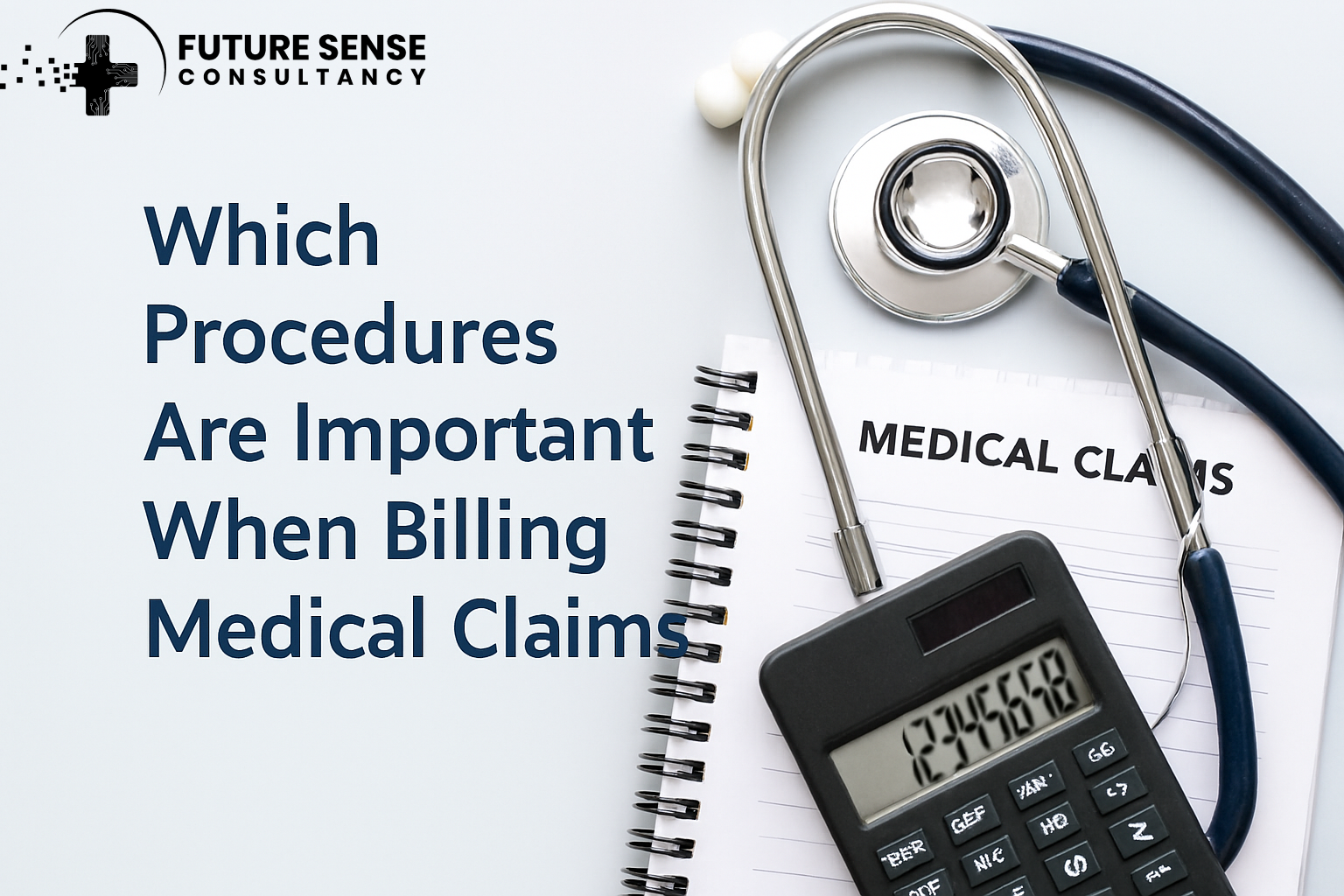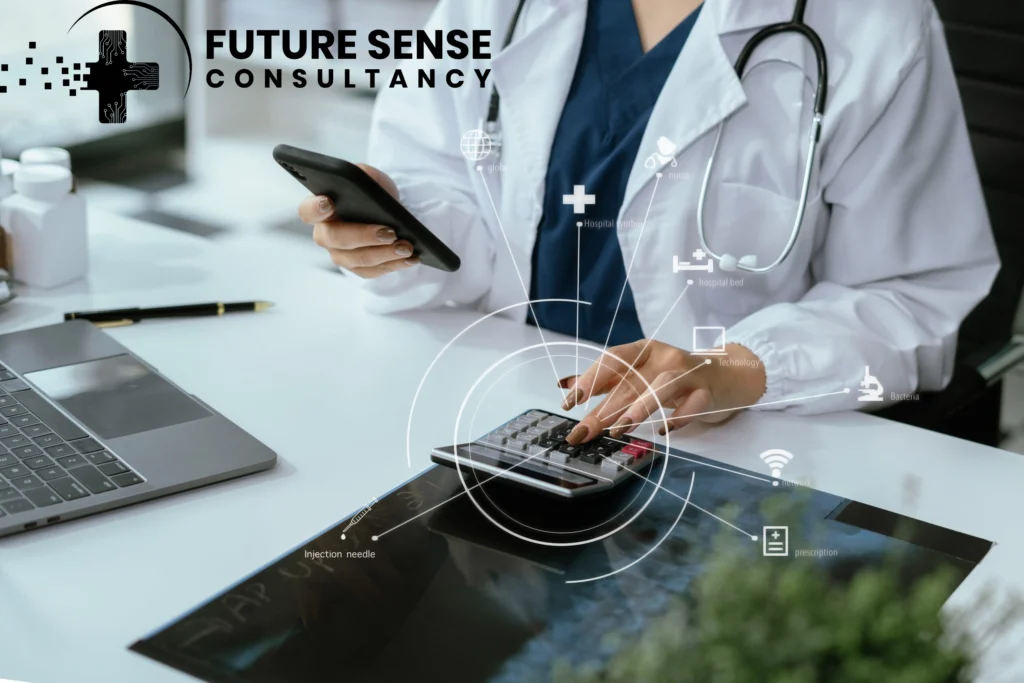Which Procedures Are Important When Billing Medical Claims: Complete Guide 2025

Which Procedures Are Important When Billing Medical Claims: Complete Guide 2025
Understanding which procedures are important when billing medical claims is essential for every healthcare provider. Each step from patient registration to denial management directly affects revenue, compliance, and claim accuracy. This complete guide explains the 10 critical billing procedures that help you reduce errors, prevent denials, and maintain a healthy revenue cycle.
Why Knowing Which Procedures Are Important When Billing Medical Claims Matters for Revenue
Medical billing procedures form the foundation of healthcare revenue cycle management. When billing medical claims, proper procedures determine whether your practice receives timely payment or faces costly denials. The healthcare industry processes over 5 billion medical claims annually, and research shows that billing errors cost approximately $68 billion each year.
Practices with strong billing procedures maintain claim denial rates below 5%, while those with poor procedures experience denial rates of 15-20%. The difference lies in implementing accurate, systematic procedures throughout the billing cycle.
Patient Registration: The First Critical Procedure in Medical Billing
Patient registration initiates the entire billing process. This procedure captures essential information that appears on every claim submitted to insurance companies. Incomplete or inaccurate registration data causes approximately 30% of all claim denials.
When billing medical claims, collect complete legal names matching insurance records exactly, including suffixes. Verify date of birth for patient identification and age-appropriate service verification. Record current addresses and contact information to ensure correspondence reaches patients. Obtain Social Security numbers when required for certain insurances and identity verification.
Insurance information must include both primary and secondary coverage details. Document guarantor information identifying the financially responsible party if different from the patient. For workers' compensation cases, collect employer details.
Best practices include using electronic intake forms that reduce transcription errors by 60%. Verify information against government-issued identification at every visit, even for established patients, as insurance frequently changes. Train front desk staff on how registration accuracy impacts payment timelines.
Understanding which procedures are important when billing medical claims also includes verifying insurance coverage before services.
Insurance Verification: A Key Procedure When Billing Medical Claims
Insurance verification ranks among the most important procedures when billing medical claims. This step confirms active coverage, identifies patient financial responsibility, and reveals prior authorization requirements. Practices that verify insurance before every appointment reduce claim denials by 20-30%.
Verify active coverage status to confirm the policy remains in effect on the service date. Check patient eligibility to ensure the patient is listed as a covered member. Determine coverage details identifying which services are covered under the specific plan. Calculate financial responsibility including copayments, deductible balances, coinsurance percentages, and out-of-pocket maximums.
Confirm network status to determine if your practice is in-network or out-of-network, significantly impacting reimbursement. Identify authorization requirements revealing which services need prior approval. Check coordination of benefits when patients have multiple insurance policies.
Real-time eligibility verification systems connect directly to insurance databases, providing instant confirmation within seconds. These systems dramatically reduce phone wait times and provide current information critical for billing medical claims accurately.
Prior Authorization: The Gatekeeper Procedure
Prior authorization procedures prevent frustrating claim denials for services performed without required approval. When services requiring authorization proceed without it, claims face almost universal denial with limited recourse.
Services commonly requiring prior authorization include diagnostic imaging like MRI and CT scans, most non-emergency surgeries, high-cost prescription drugs and biologics, durable medical equipment, physical and occupational therapy beyond initial visits, mental health services, home health care, and specialized diagnostic tests.
Submit authorization requests using the payer's preferred method with complete clinical documentation. Include specific ICD-10 diagnosis codes justifying medical necessity and CPT codes for services requiring approval. Track pending authorizations actively and follow up within 3-5 business days.
Record authorization numbers, approved services, authorized visit numbers, validity dates, and specific conditions or limitations. Missing authorization requirements creates one of the most preventable billing errors.
Among the most important procedures when billing medical claims is timely and accurate claim submission it determines cash flow success.
Medical Coding – One of the Most Important Procedures When Billing Medical Claims
Medical coding translates healthcare services into standardized codes essential for billing medical claims. Coding errors cause approximately 42% of claim denials, making this one of the most critical procedures.
Three essential code sets drive medical billing. ICD-10-CM codes describe diagnoses and symptoms, establishing medical necessity for services. These codes contain over 70,000 options providing specific detail about patient conditions, including body location, laterality, episode of care, and severity.
CPT codes describe medical, surgical, and diagnostic services performed. These five-digit codes tell insurance companies what procedures were provided. Common ranges include office visits, surgical procedures, radiology services, laboratory tests, and medicine services.
HCPCS Level II codes cover products, supplies, and services not in CPT, including durable medical equipment, prosthetics, ambulance services, and certain drugs. These codes begin with letters followed by four numbers.
Medical necessity requires linking every procedure code to diagnosis codes justifying why services were performed. This connection establishes that services were reasonable and necessary for diagnosis or treatment.
Modifiers provide additional information about services performed. Modifier 25 indicates significant separate evaluation and management services on procedure days. Modifier 50 denotes bilateral procedures. Modifier 59 shows distinct procedural services. Proper modifier use ensures accurate reimbursement when billing medical claims.
Charge Capture: Recording Every Billable Service
Charge capture procedures record all billable services during patient encounters. Incomplete charge capture represents pure revenue loss. Studies suggest providers fail to capture 1-5% of billable services, potentially costing practices $20,000-$100,000 annually per million dollars in revenue.
Document every procedure performed, supplies and materials used, time-based services accurately, facility fees when applicable, and additional provider involvement. Physicians document services in medical records or encounter forms listing common procedures and diagnosis codes.
Implement point-of-care charge capture allowing real-time entry during patient encounters, reducing forgotten services. Monitor charge lag reports tracking time between service delivery and charge entry, as longer delays decrease accuracy. Regularly audit medical records against charges entered to identify missed service patterns.
Claims Scrubbing: An Essential Step in Billing Medical Claims Accurately

Claims scrubbing identifies and corrects errors before submission to insurance companies. This quality control procedure dramatically improves clean claim rates. Clean claims accepted on first submission should represent at least 95% of submissions.
Scrubbing software checks completeness of required fields, validity of current codes, National Correct Coding Initiative edit compliance, medical necessity support, age and gender appropriateness, modifier requirements, duplicate service detection, authorization number presence, and timely filing adherence.
Most practices submit claims through clearinghouses providing additional scrubbing services.
Clearinghouses connect to hundreds of payers, translate claims into required formats, provide rejection reports, and offer status tracking.
Effective scrubbing catches technical errors like missing information, coding errors including invalid or outdated codes, bundling violations, and medical necessity concerns before payers see claims.
Claim Submission: Getting Claims to Payers
Electronic submission has become the standard for billing medical claims. Electronic claims process in 10-14 days versus 30-45 days for paper submissions. Built-in validation reduces errors while providing automatic receipt acknowledgment and status tracking.
Claims export from practice management systems in HIPAA 5010 format. Clearinghouses receive files, perform validation, translate claims into payer-specific formats, and route claims to appropriate insurance companies. Payers send acknowledgments confirming receipt.
Every insurance company establishes timely filing limits for claim submission, typically ranging from 30 days to one year from service dates. Medicare allows one year, Medicaid ranges from 90 days to one year depending on state, commercial insurance typically allows 90-180 days, and workers' compensation varies from 30-365 days by state.
Missing timely filing deadlines results in automatic denial with complete revenue loss. Submit claims within 3-5 business days of service when possible to provide cushion for unexpected delays.
Payment Posting: Accounting for Received Payments
Payment posting procedures ensure accurate account balances and identify payment discrepancies requiring attention. Record payments received, apply them to specific accounts and service dates, note adjustments or write-offs, document remaining patient responsibility, and identify denied services requiring follow-up.
The Explanation of Benefits or Electronic Remittance Advice accompanies insurance payments, detailing claim adjudication. Review billed amounts, allowed amounts per contract, deductible applied, coinsurance amounts, copayments, paid amounts, adjustments, patient responsibility, and denial codes with reasons.
Daily reconciliation matches deposit amounts to posted payments. Verify posted amounts match remittance detail. Compare allowed amounts to contracted fee schedules identifying potential underpayments. Research zero-paid claims immediately. Total adjustments ensuring reasonableness, typically 30-60% of billed charges for contracted payers.
When payments are less than expected, investigate immediately to determine if payment is correct per contract, if codes were downcoded affecting reimbursement, or if errors occurred requiring appeals. Document overpayments and contact payers, as most contracts require refunding overpayments within 30-60 days.
Denial Management: A Crucial Procedure When Billing Medical Claims
Claim denials represent substantial revenue at risk requiring 3-5 times more effort to resolve than clean claims. Average practices experience 5-10% denial rates, though best performers maintain rates below 5%.
Common denial categories include registration and eligibility issues from coverage problems, authorization denials from missing approvals, coding denials from invalid or inappropriate codes, billing denials from technical errors or timing issues, and documentation denials from insufficient medical records.
Appeal denied claims quickly within required timeframes, typically 30-180 days. Review denial reasons and payer policies thoroughly. Gather supporting documentation including medical records, clinical notes, and supporting literature. Write clear professional appeal letters addressing each denial reason. Submit through proper channels and document all activities.
Prevention proves more efficient than appeals. Conduct root cause analysis of denial patterns identifying systemic issues. Common preventable denials can be eliminated through better training, improved processes, and enhanced technology.
Patient Billing and Collections: Completing the Revenue Cycle
After insurance processing, patients are responsible for deductibles, copayments, coinsurance, and denied services. Generate clear itemized statements showing services received, insurance payments, adjustments, and patient balances. Include payment options and due dates.
Estimate patient costs upfront before services using verification data. Collect copays at service time whenever possible. Accept multiple payment methods including online portals, credit cards, and payment plans. Offer flexible arrangements for high balances.
Send payment reminders at regular intervals. Make courteous phone calls. Implement late fees per policies and regulations. For severely delinquent accounts, consider collection agencies as a last resort while maintaining positive patient relationships.
Patient collections are governed by the Fair Debt Collection Practices Act requiring practices to avoid harassment or threats, communicate during appropriate hours, respect privacy, and honor disputes.
Technology Enhancing Medical Billing Procedures
Modern medical billing increasingly relies on technology improving efficiency and accuracy. Practice management systems manage scheduling, demographics, charge entry, claim generation, payment posting, and reporting. Electronic health record integration streamlines workflows by automatically transferring documentation to billing and capturing charges at point of care.
Artificial intelligence revolutionizes billing through predictive analytics for denials, automated coding suggestions, intelligent document processing, and payment prediction models. Computer-assisted coding uses natural language processing to suggest appropriate codes, improving speed and accuracy.
Robotic process automation handles repetitive tasks like eligibility verification, claim status checking, payment posting, and denial routing, reducing manual labor while improving accuracy.
Compliance: Essential Procedures for Legal Protection

Regulatory compliance protects practices from legal and financial consequences. HIPAA governs patient information protection in all billing activities, requiring Business Associate Agreements with vendors, encryption of electronic data, secure transmission, access controls, audit trails, breach notification procedures, risk assessments, and staff training.
Healthcare fraud carries severe penalties. Red flags include billing for services not performed, upcoding to higher service levels, unbundling to increase reimbursement, duplicate billing, falsifying diagnoses, and billing medically unnecessary services.
Maintain compliance programs with written policies, designated compliance officers, regular training, anonymous reporting mechanisms, auditing systems, disciplinary procedures, and prompt investigation of problems.
Proper documentation supports all billed services with clear medical necessity indication, detailed service descriptions, provider signatures and credentials, service dates and times, and appropriate detail levels for billed service levels.
Measuring Billing Success Through Key Metrics
Track days in accounts receivable with goals under 40 days. Monitor clean claim rates targeting 95% or higher. Measure denial rates aiming below 5%. Calculate collection rates targeting 95% or higher of expected collectible amounts.
Net collection rate compares collections to allowed amounts rather than billed charges, providing accurate collection effectiveness pictures. Cost to collect measures expenses required to collect each dollar, with efficient practices maintaining ratios below 3-5%.
Regular monitoring of these metrics identifies improvement opportunities and validates successful procedures when billing medical claims.
Conclusion: Mastering Medical Billing Procedures
Important procedures when billing medical claims span from initial patient registration through final payment posting. Each step plays crucial roles ensuring healthcare providers receive appropriate compensation for services rendered.
Success requires commitment to accuracy, investment in qualified staff and appropriate technology, continuous education on changing requirements, proactive denial prevention, patient-centered financial communication, rigorous compliance procedures, and data-driven decision making.
Healthcare practices mastering these essential billing procedures position themselves for financial stability, regulatory compliance, and ability to focus on their primary mission of delivering excellent patient care. Understanding and implementing proper procedures ensures maximum reimbursement while minimizing denials and maintaining compliance with complex healthcare regulations.
Mastering which procedures are important when billing medical claims helps providers prevent denials, ensure compliance, and improve financial performance.
Frequently Asked Questions
- What happens if I don't get prior authorization before billing medical claims?
Your claim will be denied, and you typically cannot bill the patient either. This means complete revenue loss. Always verify authorization requirements during insurance verification and obtain approval before providing services. Common services requiring authorization include MRI/CT scans, surgeries, specialty medications, and durable medical equipment. - How long does it take to get paid after submitting a medical claim?
Electronic claims typically pay within 14-30 days for commercial insurance and 14-21 days for Medicare. Paper claims take 30-45 days. Clean claims without errors process fastest. Speed up payment by submitting electronically, scrubbing claims before submission, and following up after 14-21 days if unpaid. - What's the difference between a claim denial and rejection?
Rejection: Claim bounced back immediately due to technical errors (invalid codes, missing info). You can fix and resubmit—doesn't affect timely filing.
Denial: Claim was processed but payment refused (no authorization, not covered, eligibility issues). Requires formal appeal within 30-180 days. Denials are worse because they may result in permanent revenue loss.




